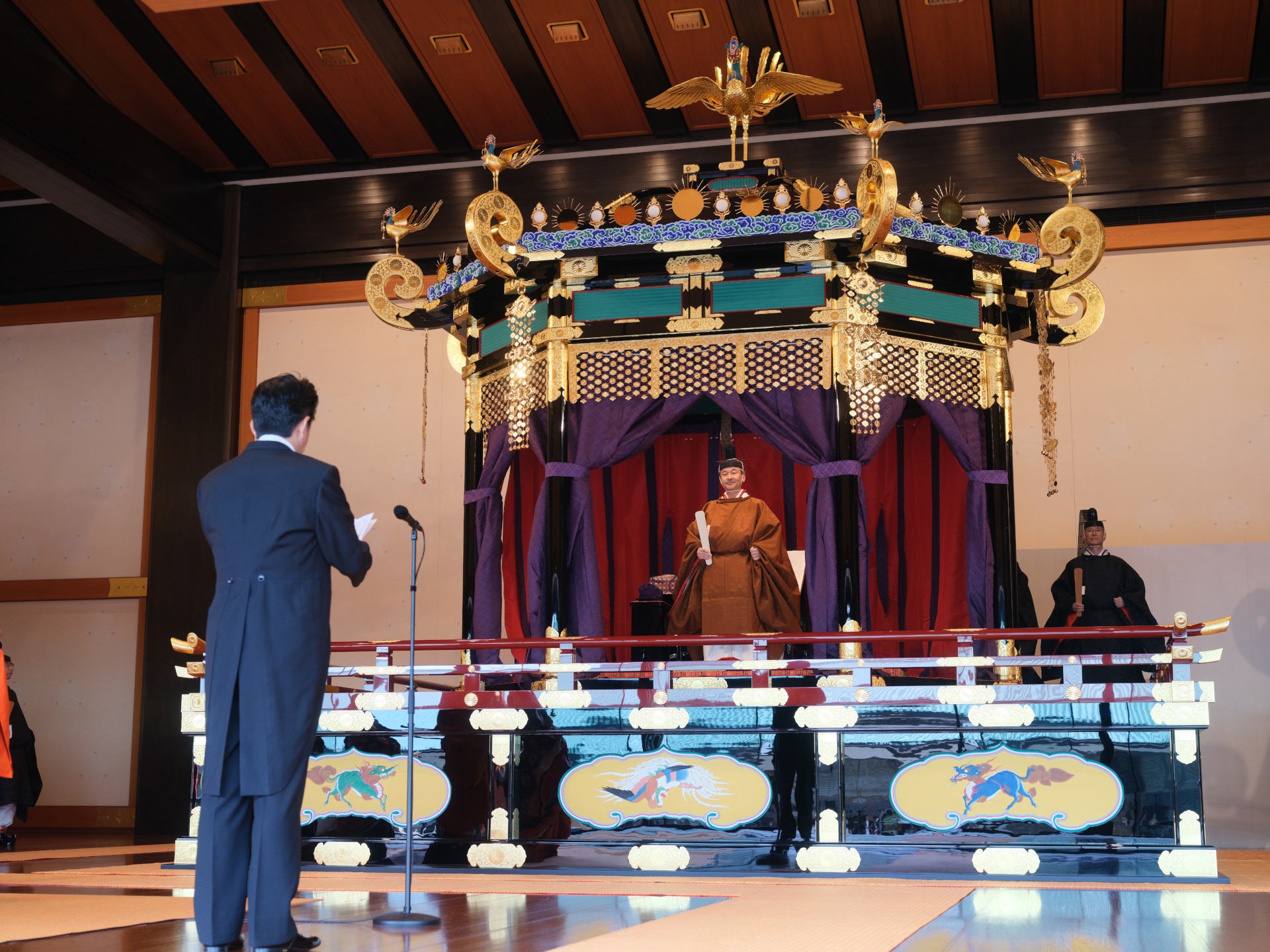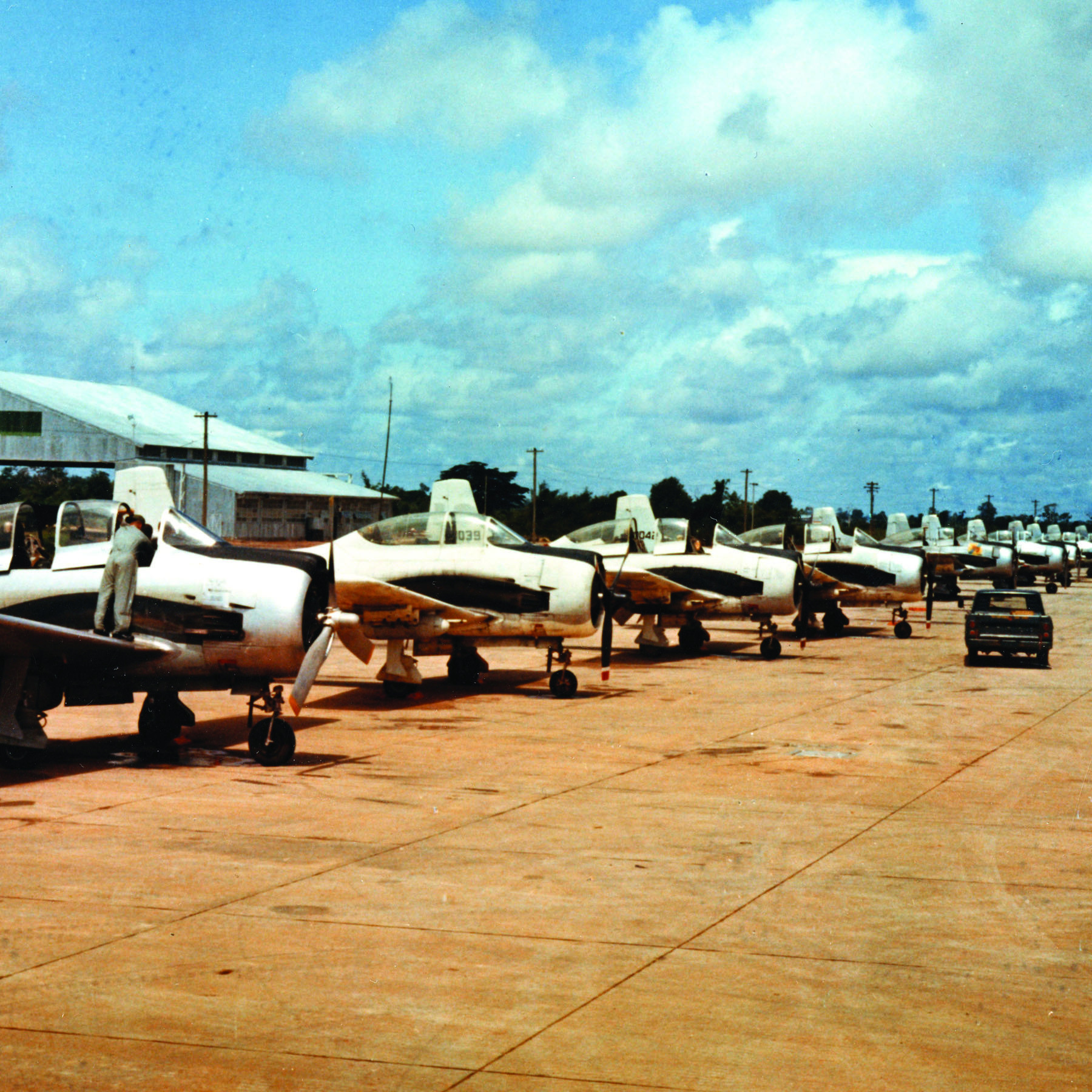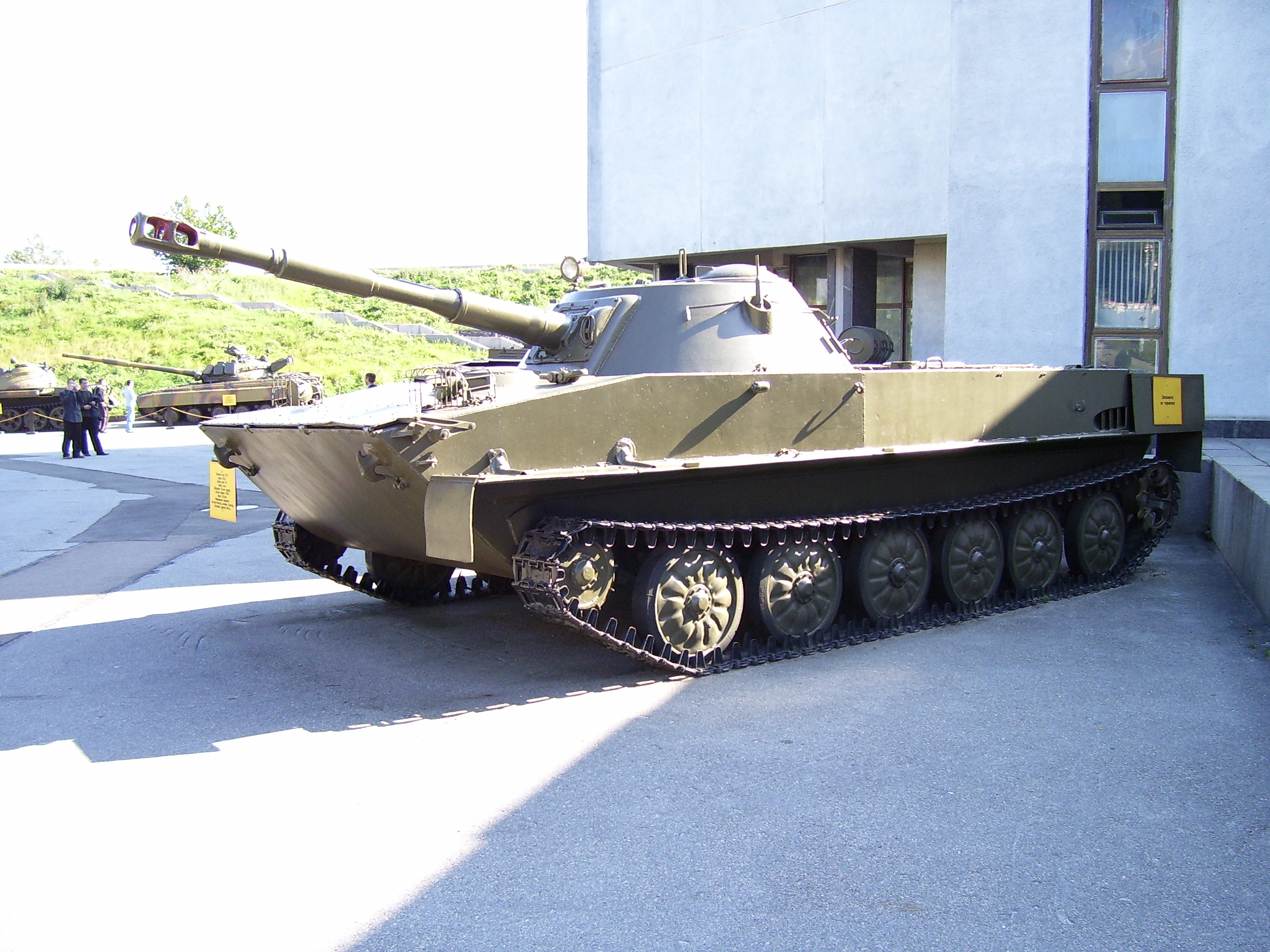|
Campaign 74B
Campaign 74B (2 February–30 April 1971) was a major combined arms offensive by the People's Army of Vietnam (PAVN) during the Laotian Civil War. The Communist offensive, if successful, would knock the last remaining fighting troops of the Kingdom of Laos out of the war, ensuring the Vietnamese conquest of Laos. The PAVN 316th Division—reinforced by artillery, tanks, and sappers—attacked during a period of slackened tactical air support for General Vang Pao's guerrilla army; Operation Lam Son 719 was being waged at the same time. Having captured the highly strategic Plain of Jars during Operation 74B, the Communists attackers managed to penetrate deeply enough to fire upon the main guerrilla base at Long Tieng. Disaster was staved off by importing mercenary troops from the neighboring Kingdom of Thailand. Using aerial mobility to outmaneuver the Communists, the Royalists managed to stave off defeat until the Vietnamese had to withdraw due to lack of supplies. A ... [...More Info...] [...Related Items...] OR: [Wikipedia] [Google] [Baidu] |
Laotian Civil War
The Laotian Civil War (1959–1975) was a civil war in Laos which was waged between the Communist Pathet Lao and the Royal Lao Government from 23 May 1959 to 2 December 1975. It is associated with the Cambodian Civil War and the Vietnam War, with both sides receiving heavy external support in a proxy war between the global Cold War superpowers. It is called the Secret War among the American CIA Special Activities Center, and Hmong and Mien veterans of the conflict. The Kingdom of Laos was a covert theater for other belligerents during the Vietnam War. The Franco–Lao Treaty of Amity and Association (signed 22 October 1953) transferred remaining French powers to the Royal Lao Government (except control of military affairs), establishing Laos as an independent member of the French Union. However, this government did not include representatives from the Lao Issara anti-colonial armed nationalist movement. The following years were marked by a rivalry between the neutralists ... [...More Info...] [...Related Items...] OR: [Wikipedia] [Google] [Baidu] |
Hmong (people)
The Hmong people ( RPA: ''Hmoob'', Nyiakeng Puachue: , Pahawh Hmong: , ) are a sub-ethnic group of the Miao people who originated from Central China. The modern Hmongs presently reside mainly in Southwest China (Guizhou, Yunnan, Sichuan, Chongqing, and Guangxi) and countries in Southeast Asia such as Vietnam, Laos, Thailand, and Myanmar. There is also a very large diasporic community in the United States, comprising more than 300,000 Hmong. The Hmong diaspora also has smaller communities in Australia and South America (specifically Argentina and French Guiana, the latter being an overseas region of France). During the First and Second Indo-China Wars, France and the United States intervened in the Lao Civil War by recruiting thousands of Hmong people to fight against forces from North and South Vietnam, which were stationed in Laos in accordance with their mission to support the communist Pathet Lao insurgents. The CIA operation is known as the Secret War. Etymology ... [...More Info...] [...Related Items...] OR: [Wikipedia] [Google] [Baidu] |
Operation Counterpunch
Operation Counterpunch, waged 26 September 1970 to 7 January 1971, was a military offensive of the Laotian Civil War. Royalist General Vang Pao's guerrilla army regained the vital all-weather forward fighter base at Muang Soui on the Plain of Jars from the People's Army of Vietnam (PAVN). The preemptive Counterpunch was credited with delaying an imminent PAVN wet season offensive for a month. The guerrilla army survived, though still heavily outnumbered by the PAVN. Overview Beginning in 1946, France fought the Viet Minh insurrection in French Indochina, including the Kingdom of Laos. When it lost that war, Laotian neutrality was established in the Geneva Agreements, 1954 Geneva Agreements. When France withdrew most of its military in conformity with the treaty, the United States filled the vacuum with purportedly civilian paramilitary instructors. A North Vietnamese-backed communist invaded during the opium harvest season of 1953. It settled in northeastern Laos adjacent to the bo ... [...More Info...] [...Related Items...] OR: [Wikipedia] [Google] [Baidu] |
Monarchist
Monarchism is the advocacy of the system of monarchy or monarchical rule. A monarchist is an individual who supports this form of government independently of any specific monarch, whereas one who supports a particular monarch is a royalist. Conversely, the opposition to monarchical rule is referred to as republicanism. Depending on the country, a royalist may advocate for the rule of the person who sits on the throne, a regent, a pretender, or someone who would otherwise occupy the throne but has been deposed. History Monarchical rule is among the oldest political institutions. The similar form of societal hierarchy known as chiefdom or tribal kingship is prehistoric. Chiefdoms provided the concept of state formation, which started with civilizations such as Mesopotamia, Ancient Egypt and the Indus Valley civilization. In some parts of the world, chiefdoms became monarchies. Monarchs have generally ceded power in the modern era, having substantially diminished since W ... [...More Info...] [...Related Items...] OR: [Wikipedia] [Google] [Baidu] |
Campaign 139
Campaign 139 (14 September 1969–25 April 1970) was a major military offensive of the People's Army of Vietnam, launched against its Royalist enemies during the Laotian Civil War. Larger than previous invading forces, Campaign 139 was also a combined arms expedition containing tanks, artillery, engineers, and Dac Cong sappers. As such, it was a decided escalation in the war. It was also an exceptional rainy season offensive by PAVN, which usually withdrew during the wet season. Launched on 14 September 1969 with 60 tanks, 26 PAVN and 10 Pathet Lao battalions, plus supporting units, Campaign 139 drove from the Lao/ DRV border into the strategic Plain of Jars in Military Region 2 of the Kingdom of Laos. The 16,000 plus invaders were opposed by a force of Central Intelligence Agency (CIA) sponsored hill tribes guerrillas some 5,500 to 6,000 strong. Hmong general Vang Pao's ''L'Armee Clandestine'' had just overrun the Plain during Kou Kiet, and the general elected to hold on. ... [...More Info...] [...Related Items...] OR: [Wikipedia] [Google] [Baidu] |
Kou Kiet
Kou Kiet (translation: Redeem Honor; also called Operation About Face) was a major Laotian Civil War victory for the anti-communist troops of the Kingdom of Laos. Patterned after prior Operation Raindance, it depended upon extensive air strikes blasting communist units and clearing them from the path of the Royalist offensive. Powered by 150 daylight and 50 night sorties daily, with 50 to 80 day strikes directed by Raven Forward Air Controllers, ''Kou Kiet'' ran from 6 August to 30 September 1969. It was successful beyond expectations. After the Royal Lao Government troops achieved their objectives, General Vang Pao insisted on pushing forward while they had the initiative. As a result, the Royalists regained control of the entire Plain of Jars while also capturing a huge stock of munitions from the communists. Their triumph came at a cost. However successful the Royalists were, by battle's end their battle-worn forces had exhausted their pool of potential recruits, while the Viet ... [...More Info...] [...Related Items...] OR: [Wikipedia] [Google] [Baidu] |
Operation Off Balance
Operation Off Balance was a hastily planned offensive operation of the Laotian Civil War; it happened between 1 and 15 July 1969 on the Plain of Jars in the Kingdom of Laos. The Royal Lao Government forces in Military Region 1 of Laos had just been evicted from the crucial all-weather airfield at Muang Soui, as well as most of the Plain, on 28 June 1969. Hmong General Vang Pao planned a quick counter-offensive to recapture the airfield from his communist foe; it would kick off on 1 July, supported by 60 sorties per day of tactical air strikes from Operation Barrel Roll. In the event, the 1 July offensive ran afoul of its Neutralist allies, who retreated rather than carry out their assault. A constant flow of reinforcements from the attacking People's Army of Vietnam fed their own strength to resist. With the Neutralists' abstention, the remaining forces in Off Balance—two battalions of Hmong guerrillas and a Royalist paratrooper battalion— were defeated by counterattacking commu ... [...More Info...] [...Related Items...] OR: [Wikipedia] [Google] [Baidu] |
Campaign Toan Thang
Campaign Toan Thang (Campaign Total Victory) was the first communist wet season offensive of the Laotian Civil War. Launched on 18 June 1969 and successful by the 27th, the assault by People's Army of Vietnam troops from the 312th Division and sappers of the 13th Dac Cong Battalion captured Muang Soui. Although the defenders outnumbered the assailants by three to one, the only hard surfaced airfield near the Plain of Jars would fall to the communists, depriving the defending Royal Lao Government of its only forward fighter-bomber base. Campaign Toan Thang was an effective riposte to the Royalist attacks of Operation Pigfat and the U.S. Air Force Operation Raindance. The Vietnamese victory at Muang Soui left them firmly in command of the war in northern Laos. Overview After World War II, France fought the First Indochina War to retain French Indochina. As part of its loss of that war at Dien Ben Phu, it freed the Kingdom of Laos. Laotian neutrality was established in the ... [...More Info...] [...Related Items...] OR: [Wikipedia] [Google] [Baidu] |
Operation Raindance
Operation Raindance was a military operation of the Laotian Civil War, staged from 17 March to 7 April 1969. It was launched by the U.S. Air Force (USAF) in support of Hmong guerrillas raised by the Central Intelligence Agency (CIA). As the guerrillas were being pressured by enemy troops pushing to within ten kilometers of their main bases, the aerial campaign was planned to cause a pullback by the pressing communists. As the first well-targeted aerial campaign in Laos, Operation Raindance's 65 strikes per day gained such great results that it was extended indefinitely. Even after its "ending" on 7 April, the interdiction continued; eventually, it would be dubbed Operation Stranglehold. In all, it was the most successful Lao air strike operation to date. Among enemy losses to air were two tanks, two BTR-40 armored cars, 32 other vehicles, 28 antiaircraft guns, 28 bunkers, and six gun positions. Bombing caused over 1,500 secondary explosions of munitions, and destroyed over 2,000 st ... [...More Info...] [...Related Items...] OR: [Wikipedia] [Google] [Baidu] |
Operation Pigfat
Operation Pigfat was a crucial guerrilla offensive of the Laotian Civil War; it lasted from 26 November 1968 to 7 January 1969. Launched by Hmong tribal soldiers backed by the Central Intelligence Agency, it was based on the usage of overwhelming air power to clear the path for the guerrillas. The guerrillas were faced with the largest concentration of Vietnamese communist troops stationed outside Vietnam, and hoped to spoil that imminent attack. In the event, the promised air power allotment was halved and curtailed. Intermittent foul weather also restricted air operations. Nevertheless, the Hmong assault against communists on the mountain of Phou Pha Thi nearly carried the position in mid-December. However, a communist night raid that destroyed an ammunition dump, followed by the arrival of a relief column from the 316th Division, tipped the balance of battle against the assailants. On 7 January 1969, the Hmong retreated while pressed hard by the communists. Both sides took he ... [...More Info...] [...Related Items...] OR: [Wikipedia] [Google] [Baidu] |
Central Intelligence Agency
The Central Intelligence Agency (CIA ), known informally as the Agency and historically as the Company, is a civilian foreign intelligence service of the federal government of the United States, officially tasked with gathering, processing, and analyzing national security information from around the world, primarily through the use of human intelligence (HUMINT) and performing covert actions. As a principal member of the United States Intelligence Community (IC), the CIA reports to the Director of National Intelligence and is primarily focused on providing intelligence for the President and Cabinet of the United States. President Harry S. Truman had created the Central Intelligence Group under the direction of a Director of Central Intelligence by presidential directive on January 22, 1946, and this group was transformed into the Central Intelligence Agency by implementation of the National Security Act of 1947. Unlike the Federal Bureau of Investigation (FBI), which is a ... [...More Info...] [...Related Items...] OR: [Wikipedia] [Google] [Baidu] |
Pathet Lao
The Pathet Lao ( lo, ປະເທດລາວ, translit=Pa thēt Lāo, translation=Lao Nation), officially the Lao People's Liberation Army, was a communist political movement and organization in Laos, formed in the mid-20th century. The group was ultimately successful in assuming political power in 1975, after the Laotian Civil War. The Pathet Lao were always closely associated with Vietnamese communists. During the civil war, it was effectively organized, equipped and even led by the People's Army of Vietnam (PAVN). They fought against the anti-communist forces in the Vietnam War. Eventually, the term became the generic name for Laotian communists. The most important source of military aid to the movement (as was also the case for the Vietnamese communists) was China; under orders from Mao Zedong, the People's Liberation Army provided 115,000 guns, 920,000 grenades and 170 million bullets, and trained more than 700 of its military officers. Organization The political ... [...More Info...] [...Related Items...] OR: [Wikipedia] [Google] [Baidu] |





